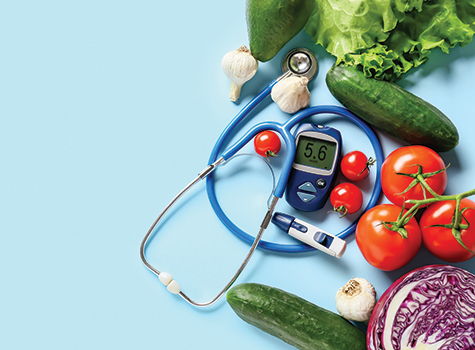
November is dedicated to diabetes awareness in honor of Dr. Frederick Banting, who discovered insulin in 1921.
According to the International Diabetes Federation, approximately 537 million adults (20-79 years) worldwide are living with diabetes. The total number of people living with diabetes is projected to rise to 643 million by 2030 and 783 million by 2045.
The South Asian population is particularly at a higher risk of diabetes due to factors such as genetic predisposition, sedentary lifestyle, higher fat around the abdomen (visceral adiposity), and unbalanced diets with higher intake of simple starches and lower protein intake.
In the past century since the discovery of insulin, and specifically in the past decade, there have been many advances in the management of diabetes. There are new medications, insulin pumps, and continuous glucose monitors which help doctors and patients make more informed decisions about treatment.
Let us learn about some of the new drugs on the market and how they may affect how and what you eat.
There are lots of different pills and injections for people with Type 2 diabetes. There are 2 main types of diabetes medicines: non-insulin medicines and insulin. Insulin can only be taken as an injection. Non-insulin medicines can be oral pills or injections. Some people may need just one type of medication, and some may need a combination.
New Treatments for diabetes and weight loss
The latest class of medications are GLP-1 receptor agonists. You may have heard of these by their brand names.
Trulicity:Â Taken as injection once a week
Victoza:Â Taken as injection once a week
Ozempic:Â Taken as injection once a week
Rybelsus:Â Taken by mouth once daily
There is also a similar class of medications called dual GLP-1/GIP receptor agonists.
Mounjaro:Â Taken as injection once a week
Zepbound: Taken as injection once a week
How do these work?
GLP-1 is short for glucagon-like peptide‑1. It is a natural hormone released from cells in the intestine that helps your body release insulin at mealtime to keep blood glucose in balance. In the case of Type 2 diabetes, the GLP-1 does not respond to higher blood glucose levels. The GLP-1 receptor agonists medications act like the GLP-1 in your body. They help manage blood glucose by:
â— Triggering release of insulin from your pancreas
â— Stopping the liver from making extra glucose
â— Slowing down the rate at which food travels from the stomach to the intestine
â— Affecting areas of your brain that processes hunger and satiety
Benefits
Other than lowering blood sugar levels and reducing weight, studies show that GLP-1 agonists may have other potential benefits, such as:
â— Lowering blood pressure
â— Improving cholesterol
â— Tackling fatty liver disease
â— Reducing risk of heart disease and kidney disease
â— Reducing cravings which is being studied for addictions
Side Effects
The most common symptoms when starting these medications are nausea, vomiting, loss of appetite, and diarrhea. The symptoms are supposed to improve as your body gets used to the medication. However, some people have not been able to tolerate the medications and have had more severe side effects.
Effect of your diet
Because these medications cause slower digestion and delay emptying of the stomach, it can make you feel full. Sometimes it may make you feel too full to the point of nausea, and you may not feel like eating. The medications also work on increasing the satiety hormone and suppressing the hunger hormone, again resulting in you not feeling hungry.
This causes people to skip meals or overly restrict food intake. It may lead to a serious condition called gastroparesis. A delayed stomach emptying can cause severe constipation, nausea, and stomach pain, and prevent food intake.
If you are taking any of these medications for weight loss and/or diabetes, there are a few tips to keep in mind. Because you will most likely be eating less when taking a GLP-1, you want to focus on foods that provide the most nutrients.
â— Eat small portions at each meal
◠Eat at regular intervals – every 3 hours
â— Avoid high sugar foods and beverages
â— Avoid high fat foods
â— Eat balanced meals with protein and complex carbohydrates
â— Drink adequate amount of water
â— Liquid foods such as soups may be easier to digest if you are having constipation or stomach pain
â— Monitor your intake, and contact your doctor if you are feeling overly restricted or having severe side effects
Parul Kharod is a registered dietitian and licensed nutritionist and works as a Clinical Dietitian. She can be reached at parulkharod@gmail.com



